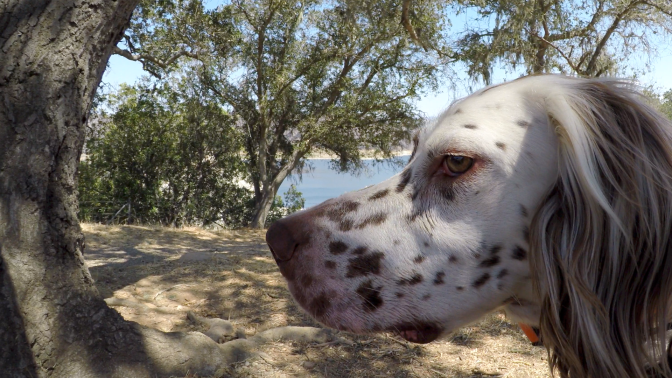Last month a fire burned almost 20,000 acres just northeast of Santa Barbra, CA. It burned through an area that contains several summer camps for kids as well as camp grounds alongside Lake Cachuma. Several dozen buildings were damaged or destroyed and hundreds of people were evacuated. Thankfully, no one was killed.
It wasn’t a particularly large fire by California standards, we average about one per year that burns over 100,000 acres. And this isn’t normally the sort of post you’d expect at Patty Outdoors. But when I drove through the area today on CA154, I was amazed and moved by the damage to the landscape. The details are well documented at other sites. (I found the KEYT Coverage Log interesting reading and their Interactive Fire Map is excellent.)
20,000 acres doesn’t look that big on a map, especially in the age of Google Earth and navigation systems. We are so used to zooming in for detail and out for scope. 20,000 acres is as big or as small as you need it to be.
But on the ground, first noticing the charred trees while driving along one edge of the fire on CA154, then looking up the ridge that it burned and finally parking and walking a little ways in the ashes under the scorched oak trees, 20,000 acres seems enormous.

I am not an expert. I can’t say if there is an upside to occasional burns in California chaparral and oak woodlands. All I can say is how sad I felt looking at all that charred wood, underbrush and ashes.
Several thousand firefighters and other emergency responders were involved in the week long effort to contain the blaze. Big thanks to them of course for literally putting their lives on the line to limit the fire damage.
When we’d passed through the burned area I pulled over at a vista point, overlooking the Bradbury Dam and the west end of Lake Cachuma. The dam was visible and there were workmen doing something at one of the exposed and open spillway gates.

This part of the Central Coast did not get the big rains that seemed to blanket the rest of California this winter. So while other California reservoirs are famously overflowing, the lake level here is still low and Patty and I had to walk a half-mile or so to get close to the current shore.

When we got near, the dusty golden grasses and twisted old oak trees gave way to gravelly shoals, willows and reeds indicating that, at least a few times in the past, the water must have reached this level. A flock of geese, making their usual racket, landed on the lake just 100 yards ahead of us. That caught Patty’s attention for sure and for a few minutes all was well in our world again.
According to http://www.fire.ca.gov/communications/downloads/fact_sheets/TheBenefitsofFire.pdf
Fire removes low-growing underbrush, cleans the forest floor of debris, opens it up to sunlight, and nourishes the soil. Reducing this competition for nutrients allows established trees to grow stronger and healthier. History teaches us that hundreds of years ago forests had fewer, yet larger, healthier trees. Forests today have more trees than in the past, but they are not as large or healthy. Established trees have to compete with undergrowth for nutrients and space. Fire clears the weaker trees and debris and returns health to the forest. Clearing brush from the forest floor with low intensity
flames can help prevent large damaging wildfires that spread out of control and completely destroy forests. Under optimum conditions, when wildfires do start, the result is a low intensity fire that remains on the ground burning grasses and vegetation, but causing less damage to trees.
LikeLiked by 1 person
Thanks Sean. The source you’re quoting specifically includes California chaparral and mentions the scrub oaks common in that area. Great additional info.
LikeLike